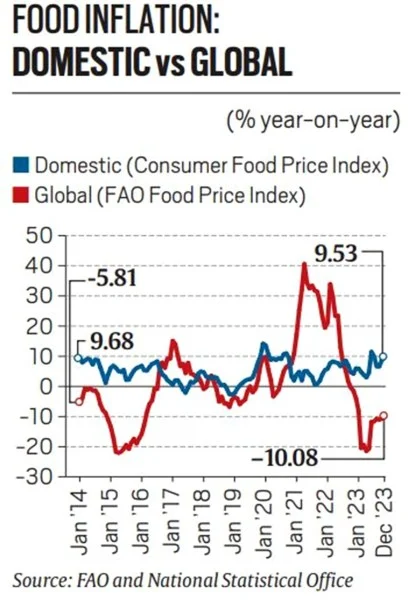India's Food Inflation in Perspective: A Comparison with Global Peers
The Indian government recently released a graph comparing India's food inflation with major economies like the US, UK, and Germany. This sparked both debate and intrigue, raising questions about the accuracy of the representation and the broader context of India's food price situation. Let's delve deeper into this topic.
The Graph and its Claims:
- The graph, released by the Ministry of Finance, reportedly showed India's food inflation remaining "moderate" and lower than the compared countries over a specific period.
- This was presented as evidence of successful government interventions in managing food prices.
Scrutinizing the Claims:
- Data Transparency: Access to the complete data and methodology used in the graph's construction is crucial for a fair assessment. Without them, independent verification and deeper analysis are impossible.
- Timeframe: The chosen timeframe significantly impacts the comparison. Short-term fluctuations might not reflect long-term trends. Additionally, including periods of global food price shocks could skew the picture.
- Basket of Goods: Comparing diverse economies requires considering differences in their "food basket." Inflation rates for specific items like vegetables or protein might vary significantly within the broader "food inflation" category.
- Global Context: While a lower rate than some may be positive, acknowledging the global scenario is essential. The World Bank reports a general rise in global food prices due to factors like climate change, supply chain disruptions, and the Ukraine war. Against this backdrop, even "moderate" inflation can have a significant impact on vulnerable populations.
Looking Beyond the Graph:
- Domestic Variations: It's important to remember that inflation figures are national averages and might not reflect regional or socio-economic disparities within India. Food price hikes can hit low-income families and geographically isolated communities particularly hard.
- Long-term Solutions: Addressing structural issues like agricultural productivity, storage infrastructure, and market access is crucial for sustainable food price management.
- Transparency and Communication: Open and timely communication regarding government interventions and their intended outcomes is essential to build trust and ensure accountability.
The government's graph offers a starting point for discussion, but a comprehensive understanding of India's food inflation requires critical analysis and consideration of various factors. Moving forward, transparency, data accessibility, and a focus on long-term solutions are key to ensuring food security and affordability for all Indians.









No comments